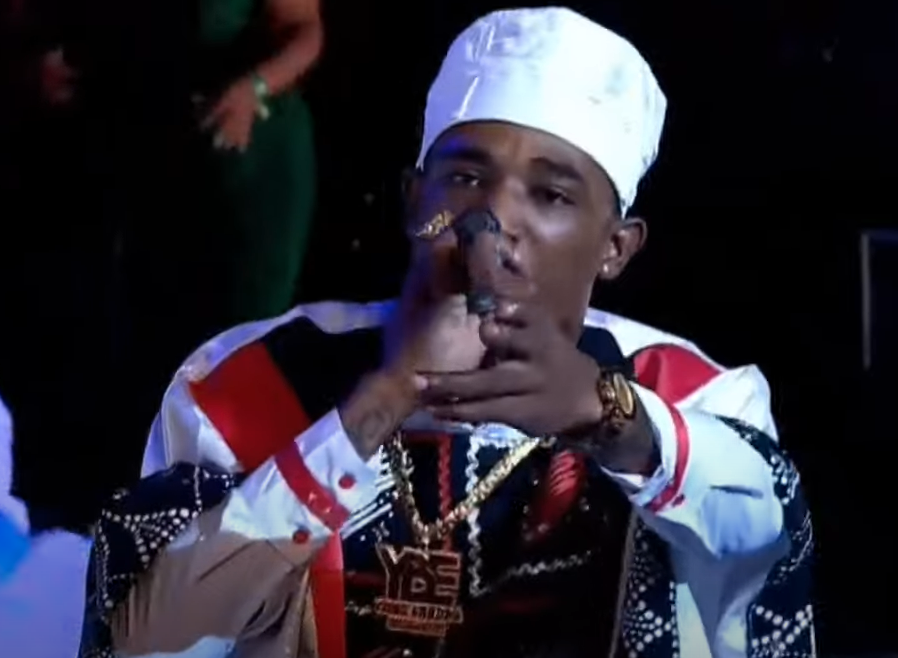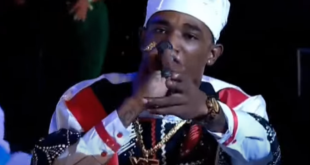There is within me an old-stager constantly reminding me of how fundamentally cinematic calypso (the good traditional stuff) is.
All the tools directors, storyboard artists, camera operators and screenwriters have at their disposal are unfurled by calypsonians in 32 lines plus chorus (see? the unapologetic old-stager), adhering to the block-development formula and using images, metaphors and their own colour and verbal filters to recount events and capture mood.

(via Jayblessed)
In ‘Lion Donkey Rematch’, the animal kingdom is in confusion because Lion and Donkey have a long-running, unresolved dispute, which has now spiralled down into physical violence.
Bo Lion an’ Donkey arguin’,
Which one of dem is really King.
De argument reach a height,
De committee say let dem fight,
All but monkey backin’ Lion,
De whole animal kingdom in confusion.
Those opening lines provide the back story, the prior reality that spawns the ensuing drama. Events swing one way, then the next. In rom-coms, the lovers destined to find happiness together at the end go through myriad ups-and-downs before finding eternal bliss. In film noir, zealous detectives hit brick wall after brick wall until they crack the case.

In ‘Lion Donkey Rematch’, the story is set up in Verse One. Donkey is humiliated in the initial stages of battle, then starts regaining ground after Lion plays foul. Verse Two ends: ‘Lion in a temper only sharing blows/rip away all ah Donkey clothes/an’ have the poor arse expose’. Verse Three ends: ‘Lion take a stool an’ really knock him dong/dog an’ all start to laugh at dis big naked arse on de grong’.
Resolution is reached in Verse Four when Donkey uses his wits—actually his ginormous secret weapon—to overcome Lion and be definitively acclaimed monarch of the animal kingdom.
It is a major tour de force. In the course of the events narrated in the story, not only is reality reversed but commonly held myth is also metaphorically shattered. Donkey, not Lion, is the true king of beasts.
Sparrow very skilfully moves his camera throughout. Via measured alternation between establishing shots, medium shots and close-ups, events are gradually brought closer to us and we are invited to consider reality in a different light.
The crowning moment is a subtle camera-in on the instant Donkey’s ‘secret weapon’ is put to use, when cinematographic insinuation is employed to reveal infinitely more than crude graphic detail.

When he have donkey at arm’s length,
He pelt a bolo wid all he strength,
Donkey weave and dat was de case,
Lion spin, donkey grab him around he wais’.
Hear de referee:
‘Dat is foul, Donkey, dat is foul!’
Donkey tell de referee ‘yes ah know’,
‘Dat is foul, Donkey, dat is foul’
‘Maybe, but dis is one foul dat could crow.’
‘Break ah say, Donkey, break ah say.’
Monkey say ‘Ah doh know what is wrong wid you.
What de hell yuh talkin’ bout break, break, break
An’ is dat he tryin’ to do?’

Sparrow needs say no more. We understand that Lion has been B-R-O-K-E-N, that Donkey has won. The final camera-in invites us to witness the new reality, forged in pain and effort. Artfully deploying all the elements of colour, camera sauntering and framing, Sparrow brings us closer and closer to that key little detail, allowing us to behold the redefined reality before us.
‘Severe Licking’ is an excellent example of ‘filtered’ narrative.
I wasn’t dey,
Is Bomber an’ Cypher who say
Dey see Shorty beatin’ a gyul
De odder day.
Dis big, big calypsonian
I was made to understan’
Put a severe lickin’ on de woman.
Dey say he could have done it privately
An’ doh let people see,
But in front ah everybody
Ah hear Shorty lick she.

The story is neatly screened through an eminently cinematic filter. ‘Is not me, Baron. Ah only tellin’ all yuh what somebody else tell me’.
Reality doctored and coloured from Line One of Verse One. À la Martin Scorsese in the opening sequence of Taxi Driver, when the camera is placed in the eye of a socially maladjusted taxi driver.
Like Scorsese, Baron moves back and forth between filters. There is constant recourse to ‘dey say’, ‘Bomber tell me’, etc. Reality is pushed to the limit of minute detail, ultimately corrected and redefined. The battle swings one way, then the next.
As in Sparrow’s animal rematch, there is a crafty va-et-vient between establishing shots, medium shots and close-ups, from the crowd to the fighters and back (filmdom’s golden rule for fighting sequences), until the culmination and final resolution. It is worth taking a closer look at how this is effected in ‘Severe Licking’.
In the first instance, it is calypsonian/cameraman Baron who cleverly alternates between the three types of shots.
Later on, on a second level, it is DOP/cutting room editor Baron who uses colour and the atmosphere thus created to take the story to culmination. Then there is a final camera-in on an oppressive reality that is corrected in the nick of time.

Owen Thompson finds similarity between the opening sequence of Taxi Driver and Baron’s ‘Severe Licking’.
Bomber tell me de fight was great
Shorty lick out de gyul plate
So she get vex
An’ decided to retaliate.
Dey say de gyul was really tough
She make out ah real hard stuff
Because she stan’ up dey
An’ take bout twenty-five cuff.
Shorty get mad an’ he pelt a kick
De gyul bob an’ weave under it
An’ she hold on to he squeeze-it
An’ start squeezin’ it.
Oh Lord, she squeeze it!
Mammayo, she squeeze it!
Shorty start to shout
She say ‘Shut yuh dam mout!’
She squeeze it till she squeeze it out.
She squeeze it!
Ohhhh Jeezan, she squeeze it.

(Copyright Allan V Crane/CA-Images/Wired868)
We gradually move from a general setting (an establishing shot: crowd, street, fight, embattled lovers in the public domain) to a minute fragment of reality that opens the way to dénouement. After ‘De gyul bob an’ weave under it’, we come as close as we possibly can to the lurid skirmish which has to end in justice and reparation.
It is akin to Hitchcock’s Rear Window, (1954), when the criminal realises he has been discovered and rushes over to his neighbour’s apartment to kill him. The photographer uses a series of camera flashes to momentarily blind his assailant each time he moves in bidding to effect the kill.
In the culminating frame, Hitchcock literally walks us into the ravaged eyes of the burly killer (played by Raymond Burr, of the Ironside TV series fame) to bring home to the audience that the supposedly stronger party is unable to overcome the challenge posed by wheelchair-ridden James Stewart.
Like the down-trodden girlfriend battling against all-powerful Lord Shorty, the helpless photographer latches on to the only element at hand. Just as Hitchcock uses light, camera flashes and adroit framing, Baron does the same with the evocative power of three masterful lines of calypso: ‘De gyul bob an’ weave under it/an’ she hold on to he squeeze-it/an’ start squeezin’ it’.

Reality craftily brought home: a camera aptly detonated, a ‘squeeze-it’ mercilessly squeezed, palpably lacerated.
Editor’s Note: Click HERE to read Part One, as Columnist Owen Thompson looks for a link between filmmaking and calypso. Wired868 will publish Part Three on Wednesday 14 October.
Owen Thompson, cricket and calypso lover and Atlético de Madrid fan, was born in Tobago, went to school in Trinidad, worked in Portugal, lived for decades in France and Spain and travelled widely in Europe, making him a writer with a world view.
 Wired868 Wired868 for smart sport news and opinion
Wired868 Wired868 for smart sport news and opinion







Someone pointed out that the whole frame of reference seems to exclude more recent calypsoes. Maybe the “ old-stager” author will get to that in subsequent pieces but I doubt it.
David Rudder and maybe Shadow, I think, are two post-1990 calypsonians who experiment with narratorial (=camera) positions but who else?
Chalkdust? Cro-cro? Aloes? Blue? Machel? Once the video became the thing, how the story is actually told ceased to interest the story-teller. In fact, it might not be untrue to say that there was not even a story told anymore.